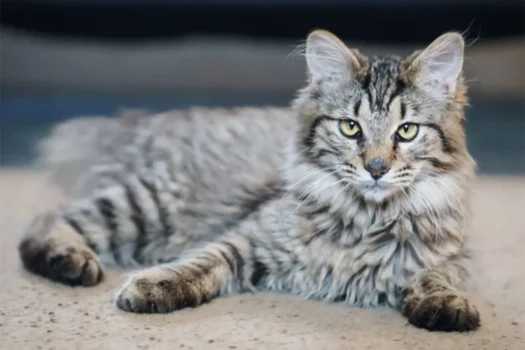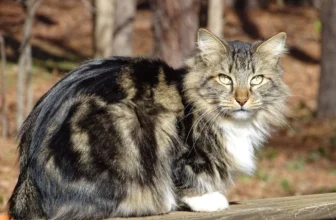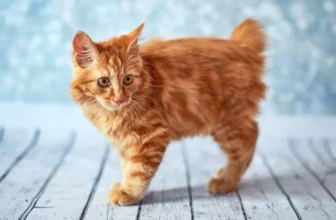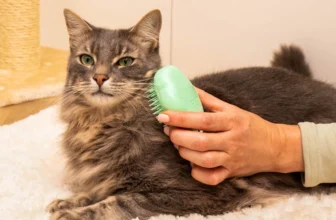Fur shedding is a common occurrence among American Bobtail cats, as it is for most feline breeds. However, pet owners understand that some cats shed more hair than others, which can be both visually unpleasant and a hygiene issue. As much as shedding is a natural process in cats, where they shed their old or damaged fur to make room for new growth, it is essential to understand the biological mechanisms behind it. This article aims to provide a comprehensive guide to understanding the biology of shedding in American Bobtails, factors that affect shedding, and how to manage shedding effectively. Whether you are struggling with excessive shedding or want to prevent it altogether, you are in the right place. Let’s dive in!
The Biology of Shedding
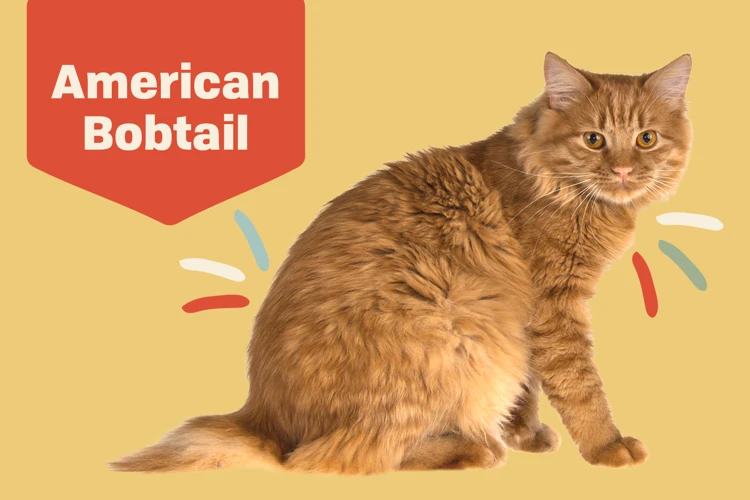
Understanding the Biology of Shedding in American Bobtails
Shedding is a natural process that occurs in all cats, including American Bobtails. Shedding can be perplexing for pet owners, as it can affect the cleanliness of their homes and the overall appearance of their pets. To better understand shedding in American Bobtails, we need to dive into the biology of shedding. Learning about the physiology of shedding and the factors that can influence it can help you manage your pet’s shedding more effectively. In this section, we will explore what happens during shedding and the various factors that can affect it. We will also share some strategies for managing shedding in American Bobtails.
What Happens During Shedding?
During shedding, American Bobtails will lose their old or damaged hair in order to replace it with new hair growth. Shedding is a natural part of a cat’s life cycle and occurs more frequently in the spring and fall months when the days start to become longer or shorter respectively. Shedding can take anywhere from two to six weeks to complete, depending on the individual cat and their overall health.
What Happens During Shedding?
When the cat is shedding, the hair follicles go through a process where they release old hairs, which are then replaced with new hair as the follicle goes into the growth phase. This process is known as the hair growth cycle. During shedding, American Bobtails will lose hair throughout their body, including the belly, legs, and tail.
To understand more about the shedding process for American Bobtails, here is a simple table that shows what happens during each stage of the hair growth cycle:
| Stage | Description |
|---|---|
| Anagen Phase | The hair begins to grow, and the follicle is active. This phase can last for several months or even years depending on the cat’s breed and health status. |
| Catagen Phase | The hair follicle starts to shrink, and blood flow to the follicle decreases. This phase only lasts a few weeks. |
| Telogen Phase | The old hair is released from the follicle, and new hair begins to grow. This phase lasts for several months before the process starts again. |
What Factors Affect Shedding?
There are several factors that can affect the shedding process for American Bobtails. These include:
- Diet: A balanced and healthy diet can help improve the overall health of the cat, which can impact the quality and amount of shedding they experience.
- Grooming: Proper grooming techniques can help remove loose hairs and prevent matting, which can make shedding more manageable.
- Seasonality: As mentioned earlier, shedding can be more prevalent during the spring and fall months as a result of changes in daylight hours.
- Stress: Stress can impact the shedding process for American Bobtails. Cats that are stressed may experience more shedding as a result of changes in their hormonal balance.
Understanding the biology of shedding and the factors that can affect it can help pet owners better manage the shedding process for their American Bobtails. To learn more about managing shedding in American Bobtails, check out our article on tips to reduce shedding in American Bobtail cats, and our post on the best grooming tools for American Bobtail shedding.
What Factors Affect Shedding?
Various factors can affect how much and how often American Bobtails shed. Here are some of the most important ones to keep in mind:
- Diet: The quality of the food your cat eats plays a significant role in their shedding habits. Feeding them a balanced, protein-rich diet that meets their nutritional requirements will keep their skin and coat healthy and reduce shedding. You may want to read more about Bobtail diet for shedding.
- Grooming: Regular grooming can help to remove loose hair, dirt, and debris from your cat’s coat, reducing shedding. Using the correct brush is crucial for managing their shedding, so you might find this article on Furminator vs. Regular Brush for American Bobtail Shedding useful to read
- Stress: Just like humans, cats can experience stress, and this can lead to excessive shedding. Make sure your cat’s living environment is calm and stress-free. If you suspect your cat is shedding due to stress, try to identify and address the underlying cause as soon as possible. Read more at Stress and American Bobtail shedding.
It’s important to dispel any myths you may have heard regarding shedding, such as shaving your cat’s coat will reduce shedding. This is false and can actually make shedding worse. Understanding these factors can help you manage and reduce shedding in your American Bobtail.
How to Manage Shedding
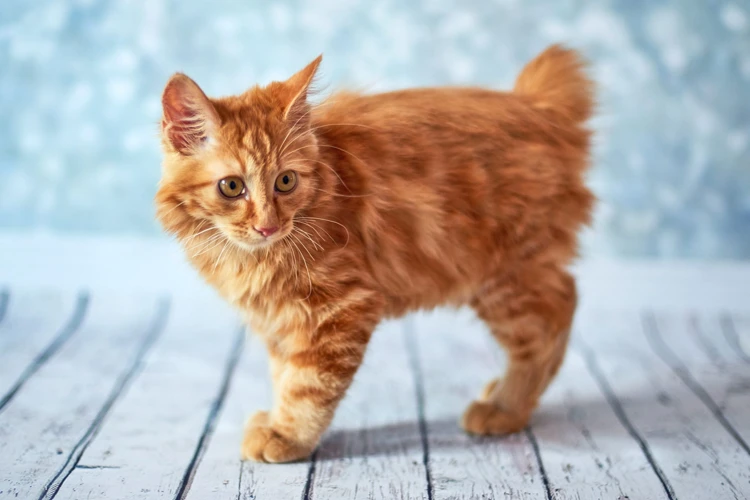
Shedding is a natural process for American Bobtails that cannot be completely prevented, but it can be managed. As a cat owner, you can take proactive steps to control your cat’s shedding and reduce its impact on your daily life. The good news is that managing shedding does not require a lot of extra time or money. There are many simple strategies that you can implement, from grooming your cat regularly to maintaining a healthy diet. In this section, we will explore various techniques that will aid you in managing shedding efficiently. So, let’s dive into some effective ways of controlling your American Bobtail’s shedding.
Grooming Tips
Grooming is an essential part of managing shedding in American Bobtails. Here are some grooming tips to help you control the shedding of your furry friend:
- Brush regularly: Brush your American Bobtail’s coat at least once a week. This will help to remove loose fur and prevent mats from forming. Use a high-quality brush with firm bristles to remove the undercoat.
- Bathe when necessary: Bathe your American Bobtail when necessary, but not too frequently, as it can dry out their skin. Choose a gentle shampoo designed for cats to avoid irritation. After the bath, rinse thoroughly to ensure no shampoo residue remains.
- Trim nails: Trim your American Bobtail’s nails regularly to ensure they don’t get overgrown. Long nails can cause discomfort while walking and snag on carpets or furniture, leading to more shedding.
- Clean ears: Clean your American Bobtail’s ears regularly with a damp cloth to remove any wax buildup that may cause irritation or infection.
- Use a lint roller: Use a lint roller or sticky tape to remove any shed fur from your clothes or furniture. Alternatively, you can use a damp cloth to collect the fur.
By incorporating these grooming tips into your routine, you can effectively manage the shedding of your American Bobtail and keep their coat healthy and shiny.
Diet and Nutrition
Maintaining a healthy diet for your American Bobtail is crucial when it comes to managing shedding. A proper diet can help reduce shedding, improve the overall health of your pet, and promote a shiny and healthy coat.
Here are some dietary tips that every American Bobtail owner should keep in mind:
- Protein: Make sure your feline friend is getting enough high-quality protein. Food sources like chicken, turkey, eggs, and salmon are rich in protein and help maintain a healthy coat.
- Fatty Acids: Omega-3 and omega-6 fatty acids are essential for maintaining healthy skin and haircoat. Fish oil, flaxseed oil, and other sources of these fatty acids should be a part of your cat’s diet.
- Water: Proper hydration is essential for cats, and a lack of water can result in dry skin and shedding. Make sure that your American Bobtail always has access to clean and fresh water.
- Vitamins and Minerals: Vitamins like A and E are essential for healthy skin and coat. Minerals like zinc and selenium are also important when it comes to reducing shedding. Consider adding vitamin and mineral supplements to your cat’s diet.
- Food Allergies: If your cat has a food allergy or intolerance, it can lead to excessive shedding. Make sure you’re feeding your cat a diet that doesn’t contain any allergens. Consult with your veterinarian to determine a suitable diet and any necessary supplements for your cat.
By following these dietary tips, you can help reduce shedding and promote a healthy coat for your American Bobtail. Keep in mind that every cat is unique, and it’s essential to consult with a veterinarian for a specific diet plan that suits your cat’s individual needs.
Home Cleaning Strategies
Keeping your home clean when you have an American Bobtail can be a challenge, but it’s important in managing their shedding. Here are some strategies you can use:
- Vacuuming regularly: One of the most efficient ways to manage shedding in your home is by vacuuming regularly. Use a vacuum cleaner with a strong suction power and a HEPA filter to capture even the smallest dust and fur particles. Aim to vacuum all surfaces at least once a week and use a handheld vacuum to clean furniture.
- Investing in air purifiers: Air purifiers can help to capture and filter hair and fur that gets into the air. Look for an air purifier with a HEPA filter and place it strategically around your home to help reduce the amount of shedding in the air.
- Washing your bedding and linens: Your bedding and linens are a haven for hair and fur to accumulate. Wash them at least once a week on high-temperature cycles to kill any allergens and dust mites.
- Using lint rollers: Lint rollers are an essential tool for quickly removing fur from your clothing and upholstery. Keep a few handy throughout your house and use them regularly to prevent hair and fur from accumulating.
- Cleaning up messes promptly: If your American Bobtail has an accident or spills food, clean it up quickly to prevent hair and fur from sticking to the mess. Use an appropriate cleaner and wipe the area down with a damp cloth.
By employing these home cleaning strategies, you can stay on top of your American Bobtail’s shedding and enjoy a cleaner, more comfortable home environment. Remember to prioritize a clean environment for your cat’s health and happiness.
The Impact of Seasonality
Seasonality can have a significant impact on shedding in American Bobtails. As the seasons change, many cats will experience a shift in their coat growth patterns. During the summer months, American Bobtails tend to shed more heavily than they do during the winter. This increase in shedding may be due to the cat’s natural response to the warmer temperatures.
Summer Shedding
During the summer, American Bobtails often shed their thicker winter coats in order to stay comfortable in the heat. This shedding process is more pronounced in outdoor cats, as they are exposed to more sunlight and experience greater fluctuations in temperature. As a result, cat owners may notice more shedding on their furniture and clothing during the summer months.
Winter Shedding
In the winter, American Bobtails tend to shed less frequently. This is because their bodies are naturally programmed to conserve heat and retain their thicker coats during the colder months. American Bobtails that spend most of their time indoors may not experience a significant change in their shedding patterns during the winter.
Managing Shedding in Different Seasons
To manage shedding in American Bobtails during different seasons, cat owners should adjust their grooming strategies accordingly. During summer months, brushing your cat more frequently can help remove loose fur and prevent it from accumulating on your furniture. Additionally, providing your cat with access to cool, shaded areas and plenty of water can help reduce stress levels and keep shedding at bay.
In the winter, cat owners should focus on maintaining their cat’s coat health. This can be achieved by ensuring that their cat receives the right nutrition and grooming regimen to promote healthy coat growth. Feeding your cat a diet rich in omega-3 fatty acids and other essential nutrients can help improve coat health and reduce shedding during the winter months.
Conclusion
Seasonality can affect shedding in American Bobtails in a variety of ways, making it important for cat owners to take the necessary steps to manage shedding during different seasons. By understanding the biology of shedding and adjusting their grooming practices and nutrition regimen accordingly, cat owners can help keep their American Bobtails healthy and comfortable year-round.
Conclusion
In conclusion, shedding is a natural process for American Bobtails and cannot be completely stopped. However, with proper grooming techniques, a healthy diet, and consistent cleaning, shedding can be managed effectively. The biology behind shedding is complex and influenced by various factors such as genetics, age, and environment.
It’s important to remember that excessive shedding may indicate an underlying health issue, so regular veterinary check-ups are essential. In addition, pet owners must understand the seasonality of shedding, as American Bobtails tend to shed more during the spring and fall months.
Overall, managing shedding requires a combination of patience, education, and consistent effort. By taking the necessary actions to keep your cat healthy and comfortable, shedding can become a minor inconvenience rather than a major problem. Remember to always show your American Bobtail love and care, as they bring joy and companionship to our lives.
Frequently Asked Questions
What is the American Bobtail?
The American Bobtail is a breed of cat that originated in the United States. These cats are known for their short, stubby tails and their affectionate and playful personalities.
How often do American Bobtails shed?
American Bobtails shed moderately throughout the year, with heavier shedding occurring during the spring and fall shedding seasons.
What causes American Bobtails to shed?
Shedding is a natural process that occurs as cats shed their old, damaged, or excess hair to make way for new hair growth. Hormonal and environmental factors can also contribute to shedding.
What can I do to reduce shedding in my American Bobtail?
Grooming your cat regularly, feeding them a healthy diet, and keeping your home clean can all help reduce shedding in your American Bobtail.
Can excessive shedding be a sign of illness in American Bobtails?
Yes, excessive shedding can be a sign of an underlying health issue in American Bobtails. If you notice unusually heavy shedding or bald patches on your cat, they should be examined by a veterinarian.
What is the best type of brush to use for grooming American Bobtails?
A slicker brush or a grooming glove can be effective tools for removing loose hair from your American Bobtail’s coat.
What should I feed my American Bobtail to promote healthy skin and coat?
A diet that is high in protein and includes essential fatty acids can help promote healthy skin and coat in American Bobtails. Look for cat foods that contain real meat and fish as the primary ingredients.
What cleaning strategies can I use to manage shedding in my home?
Regular vacuuming, using a lint roller on furniture and clothing, and keeping your cat’s bedding clean can all help manage shedding in your home.
Can allergies to American Bobtails be caused by shedding?
Yes, shedding can contribute to allergic reactions in some people. If you or someone in your household is allergic to cats, consider adopting a hypoallergenic breed or limiting contact with your American Bobtail.
Is it possible to completely eliminate shedding in my American Bobtail?
No, shedding is a natural process that cannot be completely eliminated in American Bobtails or any other type of cat. However, regular grooming and other management strategies can help reduce shedding and keep your home clean and comfortable.

